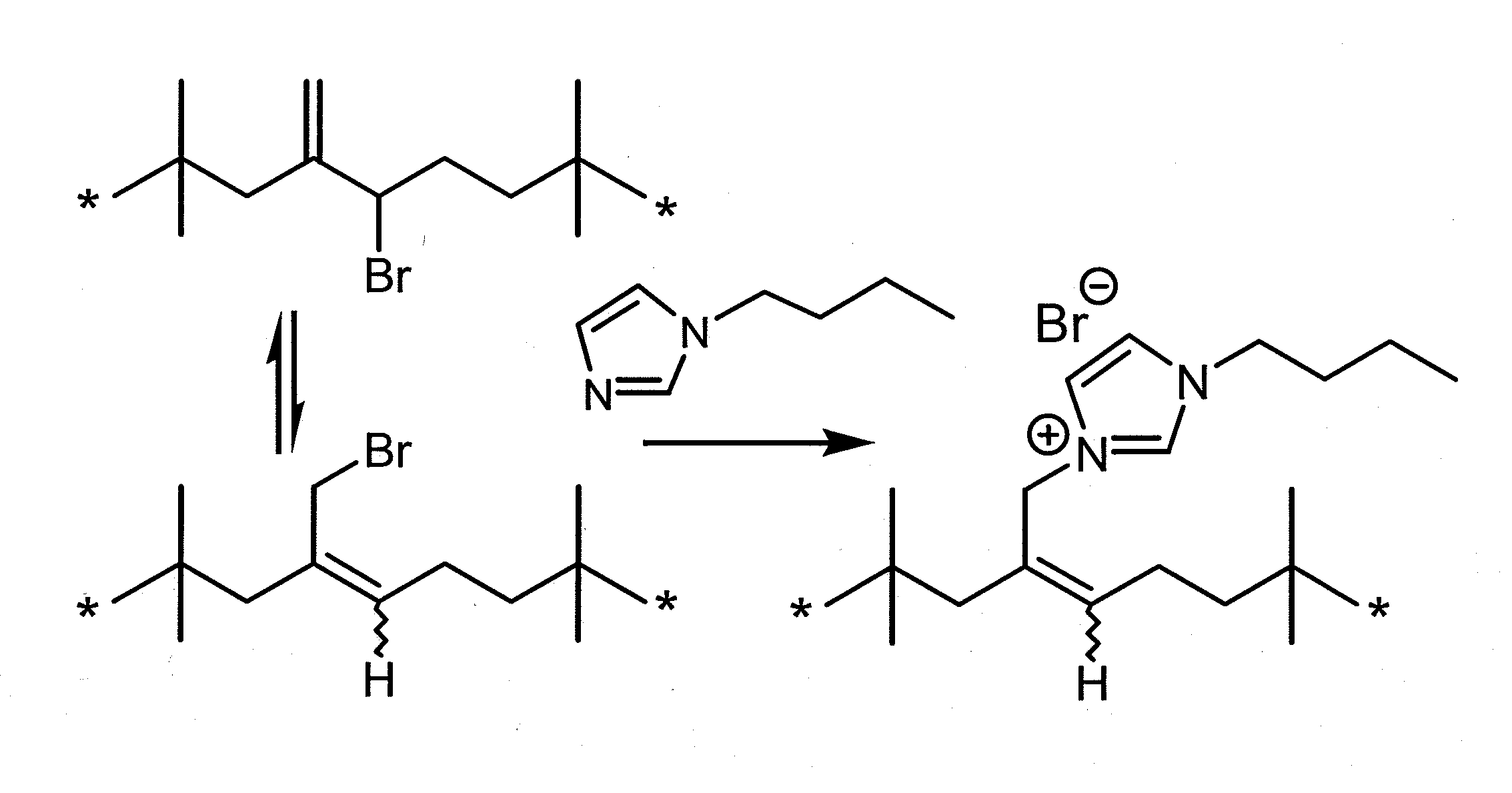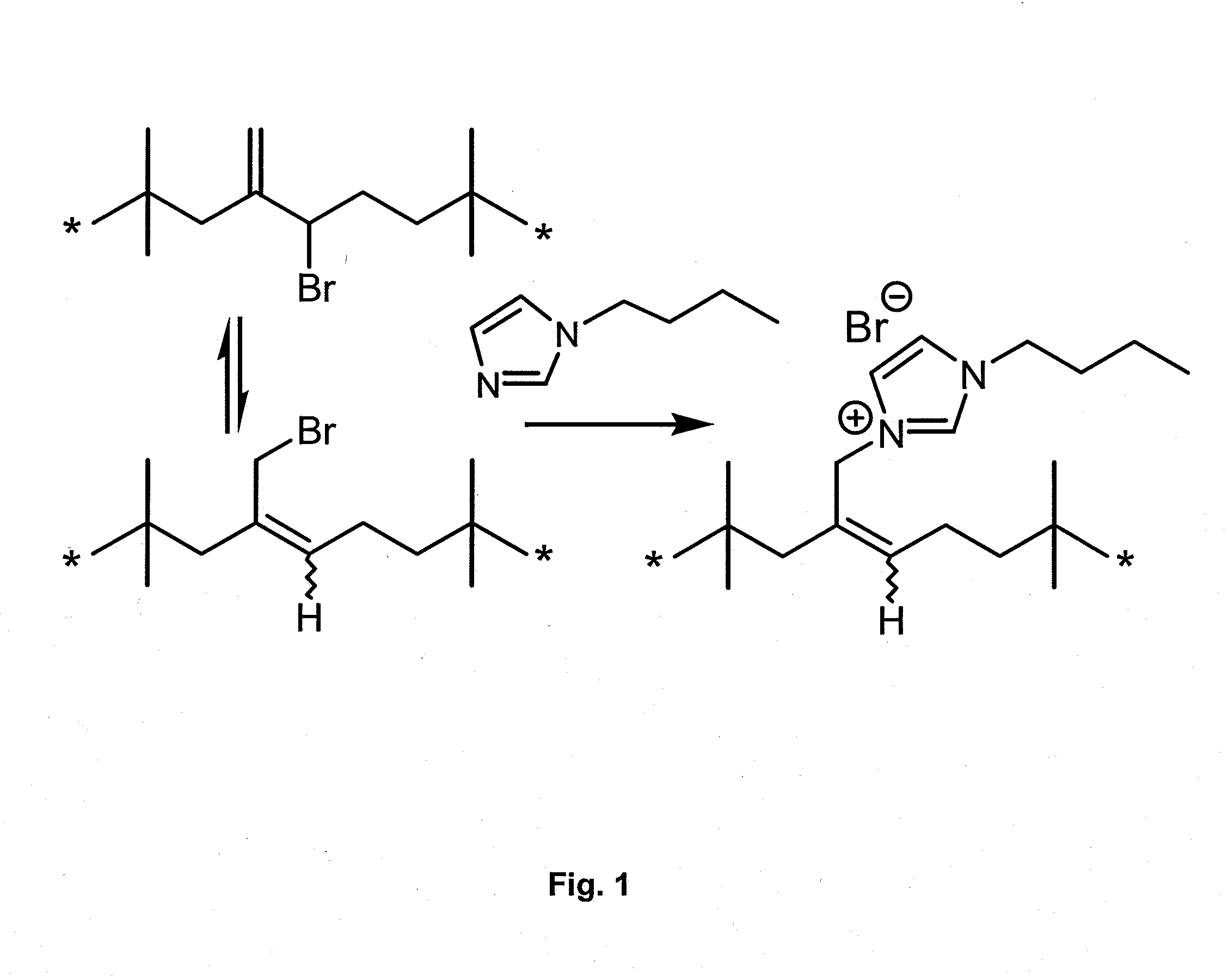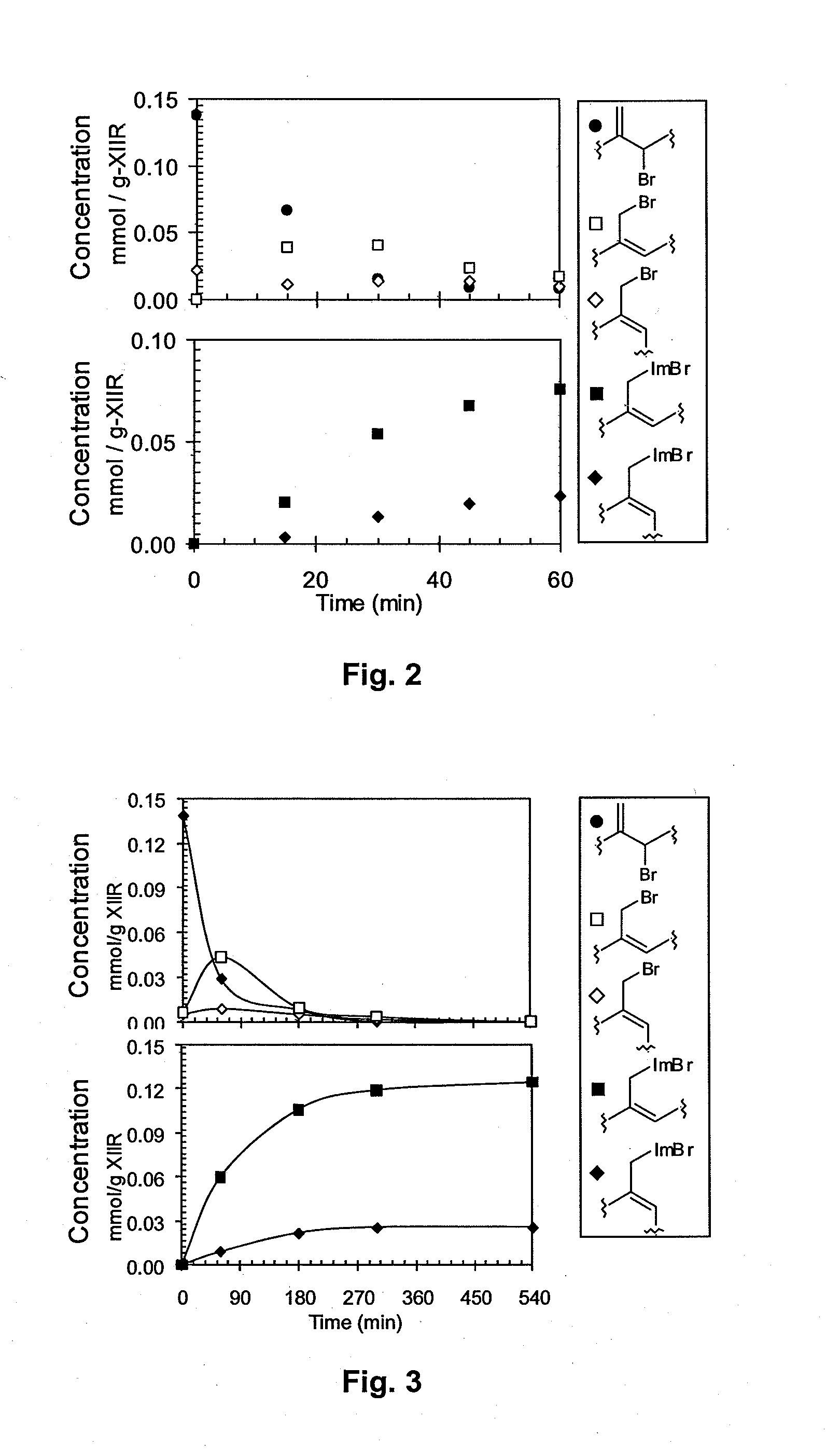Azolium Ionomer Derivatives of Halogenated Polymers
a technology of halogenated polymer and ionomer, which is applied in the field of polymer compositions, can solve the problems that the backbone of the polymer cannot be used to cure the material, the ionomer with a polyolefin backbone cannot be moisture-cured, and the chemical reaction cannot apply to the polymer backbone of the ionomer can not cure the material, etc., and achieves superior adhesion and superior adhesion to glass
- Summary
- Abstract
- Description
- Claims
- Application Information
AI Technical Summary
Benefits of technology
Problems solved by technology
Method used
Image
Examples
working examples
Materials and Methods
[0250]N-butylimidazole, N-vinylimidazole (99+%), dodecyl bromide, tetrabutyl ammonium acetate, and dicumyl peroxide (98%) were used as received from Sigma Aldrich (Oakville, Ontario, Canada). BIIR (LANXESS Bromobutyl 2030, allylic bromide content=0.2 mmol·g−1) was used as manufactured by LANXESS Inc. (Sarnia, Ontario, Canada). BIMS (benzylic bromide content=0.21 mmol·g−1) was used as manufactured by Exxon Mobil (Houston, Tex., USA). Montmorillonite clay and dicumyl peroxide (98%) were used, as received from Sigma Aldrich. The montmorillonite clay (NR4+-MM, Nanomer® I. 44P) included 35-45 wt % of dimethyldialkylamonium (70% C18, 26% C16, 4% C14) functionality, and was used as received from Sigma-Aldrich. Synthetic hydrated amorphous precipitated silica (HiSil 233) was used, as supplied, by PPG Industries Inc. (Pittsburgh, Pa., USA). Carbon black (Vulcan 3) was used as supplied by Akrochem (Akron, Ohio, USA).
[0251]Nuclear Magnetic Resonance (NMR) spectra were reco...
example 1
Solvent-Free Preparation of Azolium Ionomer, IIR-g-BuImBr
[0252]This example illustrates the synthesis of an azolium ionomer under solvent-free conditions. BIIR (40 g, 6.0 mmol of allylic bromide functionality) was mixed with 1-butylimidazole (0.816 g, 6.57 mmole) in a Haake Polylab R600 internal batch mixer equipped with Banbury blades and operating at 85° C. and 60 rpm. Samples taken at specified time intervals were analyzed by 1H NMR. Residual allylic bromide contents were quantified by 1H NMR spectrum integration to an estimated accuracy of ±5%: δ 5.01 (Exo-Br, ═CHH 1H, s); δ4.11 (E-BrMe, ═CH—CH2—Br, 2H, s), δ 4.09 (Z—BrMe, ═CH—CH2—Br, 2H, s). Imidazolium bromide contents were quantified by integration of the following allylic resonances: δ 4.86 (E-IIR-ImidazoliumBr, s); δ4.95 (Z-IIR-ImidazoliumBr, s). FIG. 2 illustrates the decline of allylic bromide content and the increase of butyl imidazolium bromide functionality, which reaches a total of 0.10 mmoles of functionality per gra...
example 2
Solvent-Borne Preparation of an Azolium Ionomer from BIIR and 1-Butyl Imidazole
[0253]This example illustrates the synthesis of an azolium ionomer by reaction of BIIR with 1-butylimidazole under solvent-borne conditions. A solution of BIIR (10.0 g, 1.5 mmol) and 1-butylimidazole (1.12 g, 9.0 mmol) in toluene (104 mL) was maintained at 100±2° C. for 6 hours under a nitrogen atmosphere. Aliquots (˜0.5 mL) withdrawn at time intervals were added to excess acetone to isolate the polymeric reaction product, which was dried under vacuum and characterized by 1H NMR spectroscopy as described in Example 1. The data illustrated in FIG. 3 show that the displacement of bromide from BIIR by 1-butyl imidazole proceeds to full conversion of allylic bromide to imidazolium bromide functionality.
PUM
| Property | Measurement | Unit |
|---|---|---|
| particle sizes | aaaaa | aaaaa |
| BET specific surface area | aaaaa | aaaaa |
| particle diameters | aaaaa | aaaaa |
Abstract
Description
Claims
Application Information
 Login to View More
Login to View More - R&D
- Intellectual Property
- Life Sciences
- Materials
- Tech Scout
- Unparalleled Data Quality
- Higher Quality Content
- 60% Fewer Hallucinations
Browse by: Latest US Patents, China's latest patents, Technical Efficacy Thesaurus, Application Domain, Technology Topic, Popular Technical Reports.
© 2025 PatSnap. All rights reserved.Legal|Privacy policy|Modern Slavery Act Transparency Statement|Sitemap|About US| Contact US: help@patsnap.com



